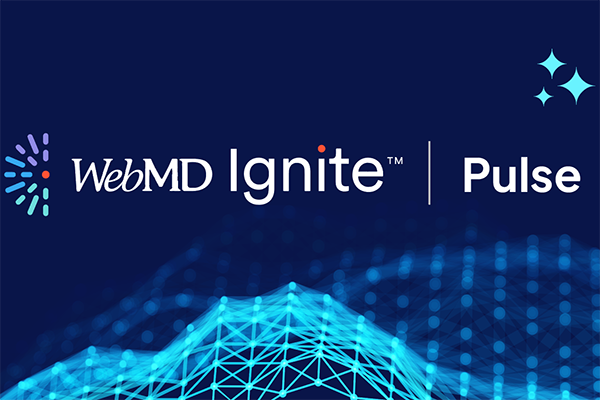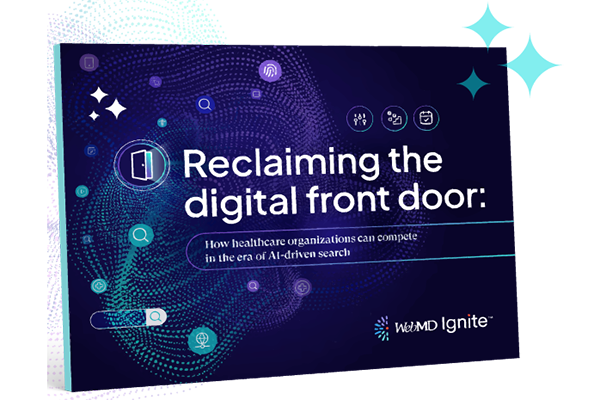Editor's Note: This blog was published prior to the transition to WebMD Ignite.
There's been a lot of talk in recent years about using “big data" to improve patient care and help hospitals and health systems run more efficiently. Often missing from the discussion, however, has been a clear definition of what big data is, or even the simplest explanation of its two distinct parts. Here we offer our understanding of what it is about large data sets that make them so appealing, especially when it comes to healthcare marketing. And we spell out the differences between structured and unstructured data — and how your marketing department might benefit from each.
What is big data?
For a working definition of “big data," we'll begin with the entry listed by Merriam-Webster. The term refers to “an accumulation of data that is too large and complex for processing by traditional database management tools," the dictionary reports. Other descriptions of big data, including that offered by the Healthcare Information and Management Systems Society (HIMSS), note that it typically has at least three characteristics: volume, velocity, and variety. These “three Vs," as they're commonly known, describe the large amounts of data (terabytes, petabytes, etc.) that make big data “big," the speed at which it is created and must be analyzed, and the many different formats in which it is found. It's this last dimension, variety, where structured and unstructured data come into play.
Defining types of data in healthcare
Structured data - Structured data, according to HIMSS, is data “organized into specific fields as part of a schema, with each field having a defined purpose." Structured data can be found in any healthcare database, and may include details like customer names and contact information, lab values, patient demographic data, and financial information.
Unstructured data - HIMSS describes “unstructured data" as data that “cannot be easily organized using pre-defined structures." Examples specific to healthcare, the group explains, include radiology images or text files, like a physician's notes in the electronic health record (EHR). But unstructured data also includes data from anonymous web users' comments, Twitter data, voice search data, and basically any other touchpoint a consumer could have with your brand online. Unlike structured data, which fits neatly into predefined categories, it's almost impossible to put unstructured data in a box, which makes it that much harder to utilize without a lot of manual labor. Unstructured data can be useful, but it takes structure to make it so.
Structured and Unstructured Data in Healthcare Marketing
While most of the excitement around big data in healthcare has to do with its applications in clinical settings, hospital strategy and marketing teams can also leverage this information to gain valuable insights about current and potential customers.
Structured data
On the structured-data side of the equation, for example, most organizations that are investing in a healthcare customer relationship management (CRM) system expect ease of integration between it and various martech systems, but there have been challenges. For example, one system may have coded “Male” as “m” and another as “male,” so statistics do not automatically aggregate correctly. Or for a health system with multiple locations, variations in spelling can cause misreporting without time-intensive labor to correct. Now, with the use of customer data platforms (CDPs), matching and cleansing structured data from these disparate systems can happen on the back end, before your CRM ever calls upon it to use for building lists or sending out campaigns. An intelligent CDP allows for these variations to be more easily accounted for, and in some cases, fuzzy matched by the CDP to link the proper records together.
Unstructured data
For unstructured data like radiology images, speech, etc., one can extract structured data through specialized systems and then feed it back into the CDP to be more readily available for martech’s use. One of the simplest examples of unstructured data matching comes from anonymous or pseudo-identified users, i.e., you know the same person has visited your website and interacted with your organization through other touchpoints, but you don’t yet know who that person is. A CDP can retain, enrich, and iteratively process this information until a user can be identified, which now allows the marketer to engage this pseudo-identified consumer in a more personalized, relevant, and persuasive manner.
One of the other benefits of a CDP is the ability to generate machine-learned insights from data it has captured. CDPs can pull information from a variety of digital touchpoints and learn from it using deep learning artificial intelligence until it's called on by marketing execution systems for use. A CDP also has the ability to then more easily supply subsets of this enhanced insight to upstream systems, like your healthcare CRM. Think of the CDP as a kind of data factory, a system that digests all data that it finds and turns it into useful data products that other systems can use. Healthcare organizations on the cutting edge of marketing are using CDPs and CRMs in combination: the former to turn raw data into useful insights, and the latter to put that insight to work.
Mastering big data
The bottom line, for healthcare strategists and marketers, is you need both kinds of data — structured and unstructured — to run an effective campaign. Look to the three Vs with your CRM and CDP, and it won't be long before you're a master of big data.
Want to learn more about how a CDP powered healthcare CRM can help drive business and population health goals for your entire organization? Read on to learn what a CDP purpose-built for healthcare can do.





